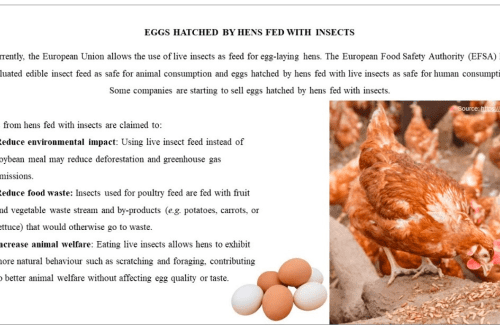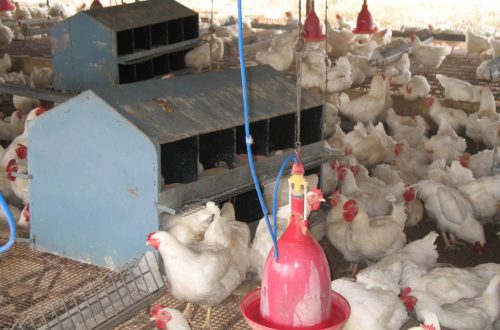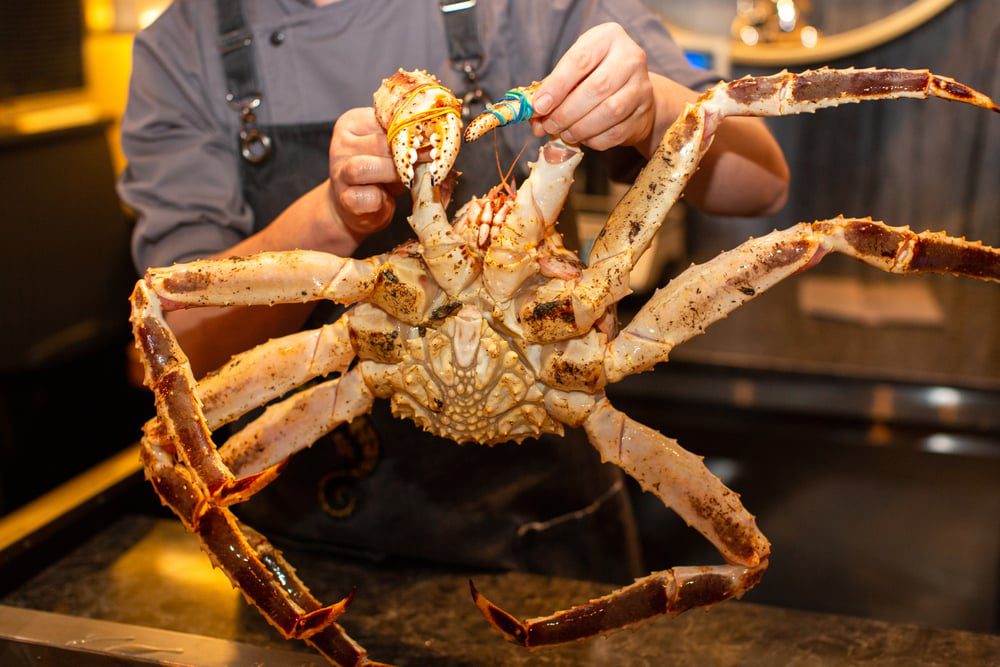
Top 10 biggest crabs in the world
Crabs belong to the decapod crustacean infraorder. They have a small head and a short abdomen. They can be found both in fresh water bodies and in the seas. In total, there are 6 types of crabs, all of them of different sizes and colors.
The smallest is the pea crab, whose size does not exceed 2 mm. The largest crabs weigh 20 kg. Each has 10 legs and 2 claws. If he loses a claw, he may grow a new one, but it will be smaller in size.
They are omnivorous, eating algae, fungi, crustaceans, worms, and molluscs. Crabs move sideways. Learn more about the biggest short-tailed crayfish, as crabs are also called, read our article.
Contents
10 Maltese freshwater crab, 150 g
 As the name implies, this crab prefers freshwater bodies of water, namely streams, rivers and lakes, lives in holes, young individuals hide under stones. Their burrows are quite long, reaching up to 80 cm in length. They are his refuge not only from predators, but also from the cold.
As the name implies, this crab prefers freshwater bodies of water, namely streams, rivers and lakes, lives in holes, young individuals hide under stones. Their burrows are quite long, reaching up to 80 cm in length. They are his refuge not only from predators, but also from the cold.
Found in Southern Europe. An adult grows up to 5 cm in length, females are smaller than males. Maltese freshwater crab lives from 10 to 12 years. He is omnivorous, can eat plants, frogs, and tadpoles, will not refuse snails, worms.
Pretty aggressive. There are no predators that would feed only on this type of crabs, but they can be hunted by birds, foxes, rats, ferrets. However, the most dangerous enemy for them is a person.
Maltese crab began to be eaten in ancient times. One catcher can collect from 3 to 10 thousand crabs per season. They are under threat due to overfishing.
9. Blue crab, 900 g
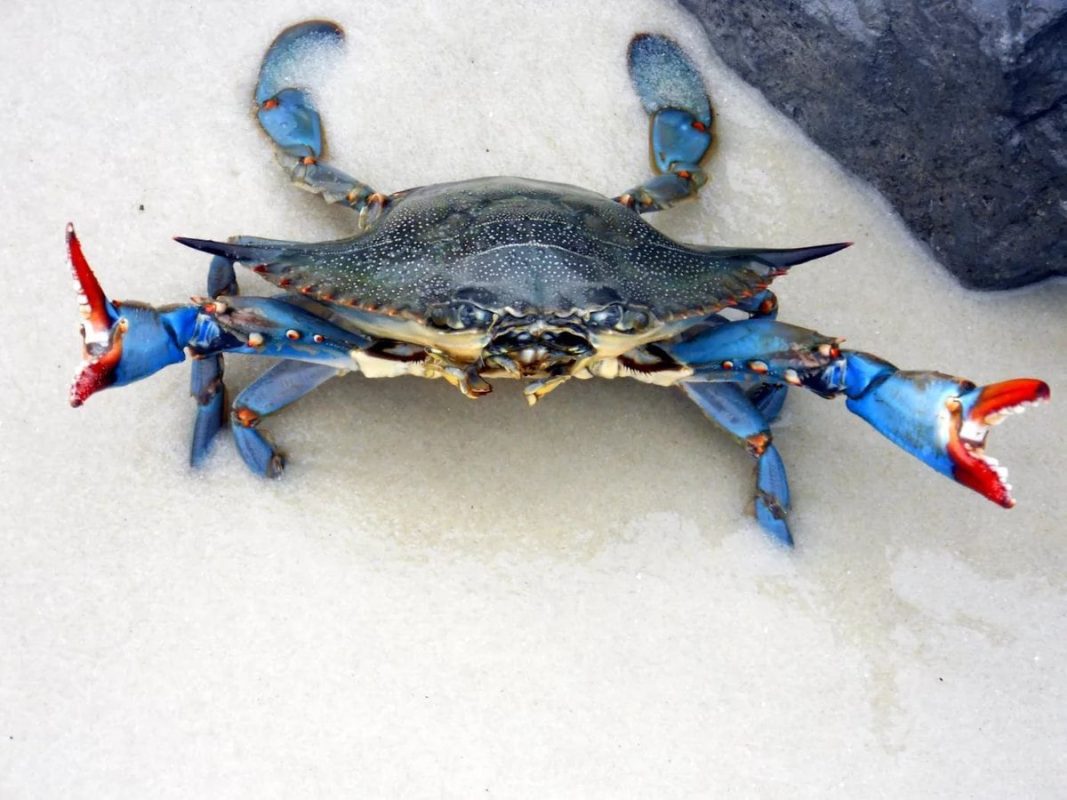 Their homeland is North and South America. blue crab chooses shallow water and estuaries for life. Selects a sandy or muddy bottom. He needs warmth. He, like all crabs, is omnivorous. If there is not enough food, it can eat its own kind. Its width is from 18 to 20 cm, and its length is from 7,5 to 10 cm, males are slightly larger than females.
Their homeland is North and South America. blue crab chooses shallow water and estuaries for life. Selects a sandy or muddy bottom. He needs warmth. He, like all crabs, is omnivorous. If there is not enough food, it can eat its own kind. Its width is from 18 to 20 cm, and its length is from 7,5 to 10 cm, males are slightly larger than females.
The blue crab got its name because of the color of its shell, which can be not only brown, gray shades, but also greenish, with a blue tint.
He lives from two to four years. Most of his life he hides. It is preyed upon by sea turtles, the American herring gull and other animals. People also catch him, because. it is considered a delicacy.
8. Spiny crab, 2 kg
 It can be found in the north-east of the Pacific Ocean, in the Bering and Okhotsk Seas, in Kamchatka, near the Kuril Islands and near Sakhalin.
It can be found in the north-east of the Pacific Ocean, in the Bering and Okhotsk Seas, in Kamchatka, near the Kuril Islands and near Sakhalin.
The width of its shell is from 11 to 14 cm, the females are slightly smaller – from 10 to 13 cm. It is covered with large and thick spikes. Weighs from 800 g to 2 kg. A comfortable depth for them is 25 m, but in southern waters they sink lower, they can be at a depth of up to 350 m.
When the water temperature drops, it can swim into the mouths of the rivers, where it is not so cold. He was able to adapt to fresh water. Spiny crab red or burgundy. Its meat is a real delicacy, it is sweetish, juicy, satisfying.
7. Shear crab, dusted, 2 kg
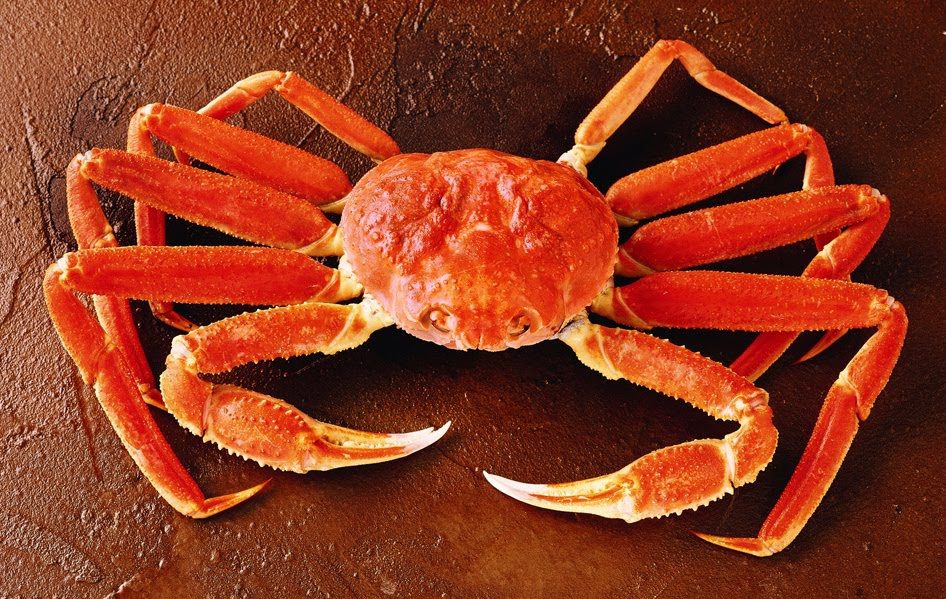 Its other name is common snow crab, he lives off the coast of the Bering Sea and the Sea of Okhotsk, is also found in Canada, off the coast of Greenland, etc. It can be at a depth of 13 to 2 thousand meters.
Its other name is common snow crab, he lives off the coast of the Bering Sea and the Sea of Okhotsk, is also found in Canada, off the coast of Greenland, etc. It can be at a depth of 13 to 2 thousand meters.
The width of the crab is 16 cm, the leg span is up to 90 cm. Females are 2 times smaller than males. Their carapace is reddish in color, covered with tubercles and spikes. The opilio snow crab feeds on benthic invertebrates. There may also be carrion. They have sweetish meat, which is high in protein and low in fat.
6. Coconut crab, 4 kg
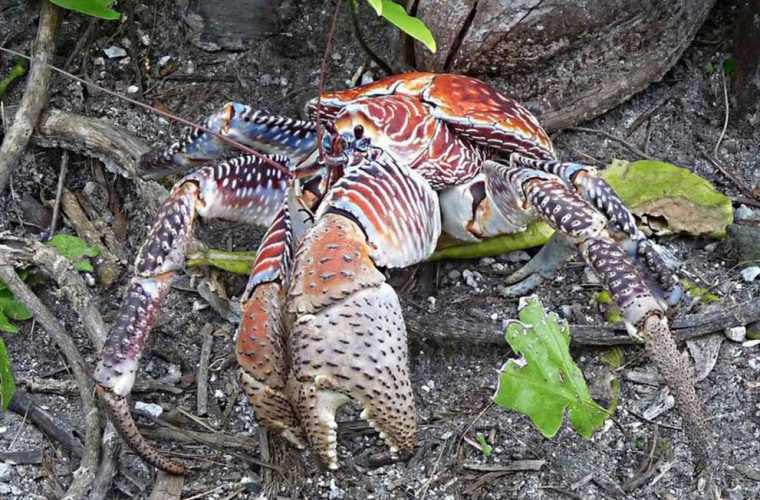 Despite the name, this is not a crab, but a type of decapod crayfish. He is also called palm thief. So they call him because they used to believe that he can climb palm trees and cut coconuts from them, so that later he can eat the pulp of a broken nut. Moreover, if the coconut is not split, it easily opens it with its claws.
Despite the name, this is not a crab, but a type of decapod crayfish. He is also called palm thief. So they call him because they used to believe that he can climb palm trees and cut coconuts from them, so that later he can eat the pulp of a broken nut. Moreover, if the coconut is not split, it easily opens it with its claws.
But biologists say that coconut crab does not know how to extract nuts, but does not mind feasting on “padans” that were torn off by the wind.
The palm thief grows up to 40 cm. He has really strong claws with which he can crush small bones. It feeds on coconuts, pandan fruits, and other crustaceans. Lives in shallow burrows lined with coconut fibers, sometimes hiding in rock crevices. Can climb a tree.
5. Blue crab, 4 kg
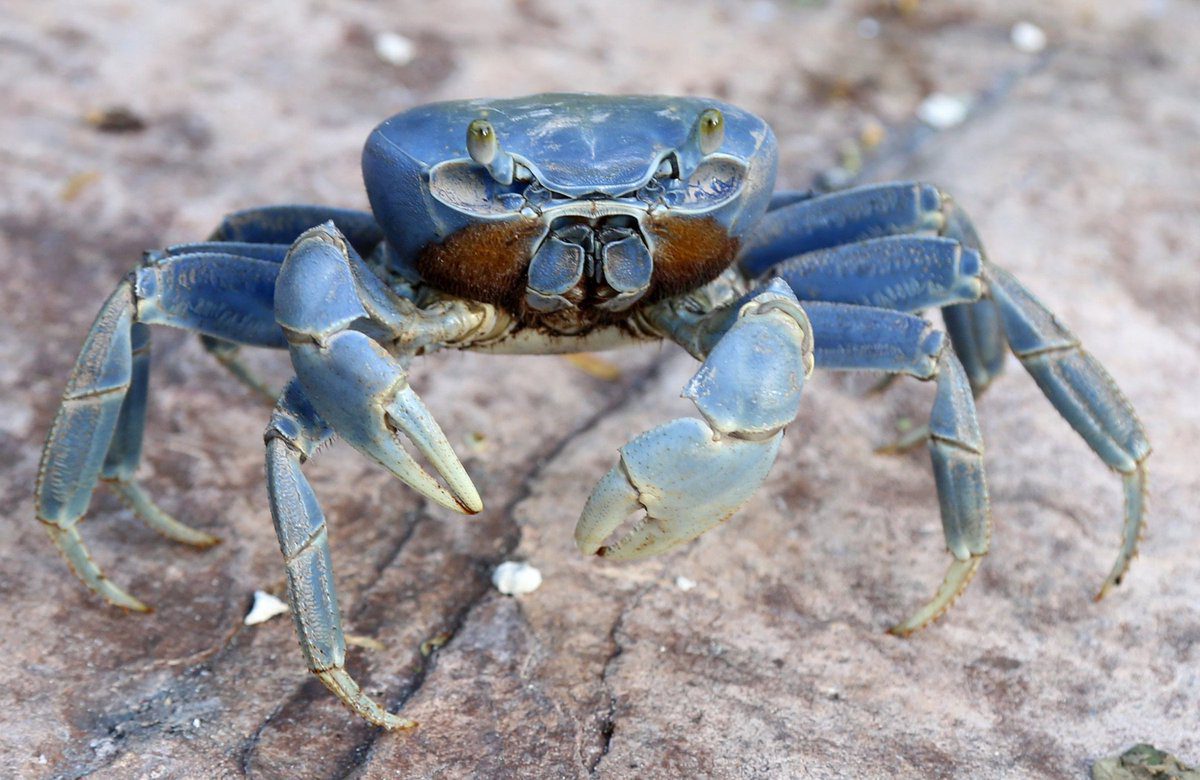 This is also a craboid, i.e. outwardly similar to a crab, but refers to hermit crabs. Outwardly similar to the king crab. Its width is up to twenty-two centimeters in males, and slightly less in females. Weight – up to five kilograms.
This is also a craboid, i.e. outwardly similar to a crab, but refers to hermit crabs. Outwardly similar to the king crab. Its width is up to twenty-two centimeters in males, and slightly less in females. Weight – up to five kilograms.
The body is red with a brown tint that shimmers with blue, and the bottom is yellowish-white, there are orange spots. It is covered with spikes; young crabs have tubercles instead of spikes.
They live quite a long time, from 22 to 25 years. This species can be found in the Japanese, Bering, Okhotsk seas. blue crab are used for food.
4. Large land crab, 3 kg
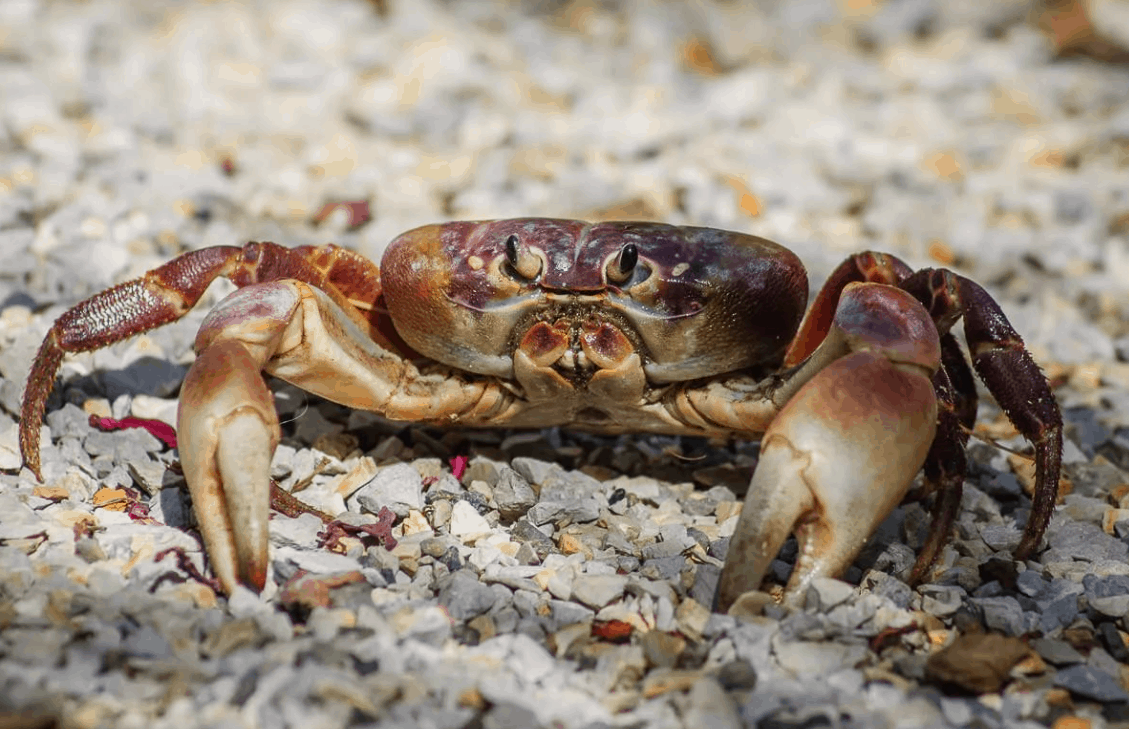 Other names – brown or edible crab, because it is reddish brown. It is similar in shape to a closed pie. The width of the shell of an adult individual can reach 25 cm, but, as a rule, 15 cm, it weighs up to 3 kg. The length is most often about 6 cm in males, and almost 10 cm in females, and up to 15 cm in some individuals.
Other names – brown or edible crab, because it is reddish brown. It is similar in shape to a closed pie. The width of the shell of an adult individual can reach 25 cm, but, as a rule, 15 cm, it weighs up to 3 kg. The length is most often about 6 cm in males, and almost 10 cm in females, and up to 15 cm in some individuals.
He lives in the North Sea, in the Atlantic Ocean. Prefers to hide in cracks and holes in rocks, leads a nocturnal lifestyle. Large land crab feeds on crustaceans, molluscs, pursues prey or lures it into an ambush.
Its main enemies are octopuses, as well as people. They are caught in large numbers, so, in 2007, 60 thousand tons were caught around the British Isles, which is why this type of crab almost disappeared there.
3. Tasmanian king crab, 6,5 kg
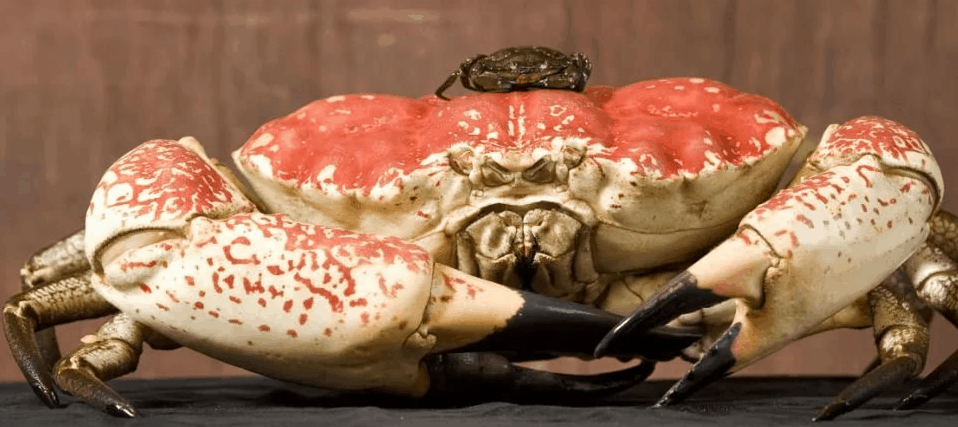 Tasmanian king crab or, as it is also called, giant tasmanian crab – one of the largest in the world, its width is up to 46 cm, weight can reach up to 13 kg. Males are especially distinguished by their size, which are 2 times larger than females. It has a light color with red spots.
Tasmanian king crab or, as it is also called, giant tasmanian crab – one of the largest in the world, its width is up to 46 cm, weight can reach up to 13 kg. Males are especially distinguished by their size, which are 2 times larger than females. It has a light color with red spots.
You can meet this type of crab in southern Australia, at a depth of 20 to 820 m, but prefers a depth of 140 to 270 m. It feeds on mollusks, starfish and crustaceans.
They are being hunted, because. These crabs have a lot of meat and it tastes good. Off the coast of Australia, one of the representatives of this species was caught, who was named Claude. The British Aquarium bought it for £3. Despite the fact that he was quite young, he then weighed about 7 kg, but, according to experts, having matured, Claude can become 2 times heavier.
2. King crab, 8 kg
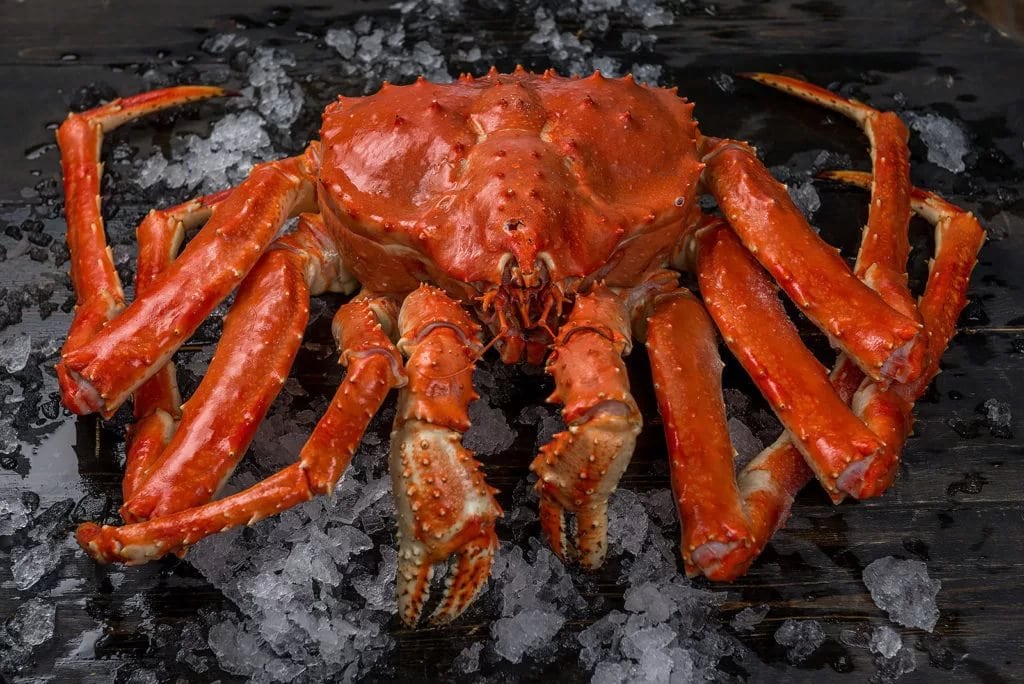 Kamchatka crab – also a craboid, i.e. outwardly very similar to a crab, but refers to hermit crabs. This is the largest crustacean living in the Far East. It is red-brown, yellowish below, with purple spots on the sides. In width, it grows up to 29 cm, plus limbs that reach 1-1,5 m.
Kamchatka crab – also a craboid, i.e. outwardly very similar to a crab, but refers to hermit crabs. This is the largest crustacean living in the Far East. It is red-brown, yellowish below, with purple spots on the sides. In width, it grows up to 29 cm, plus limbs that reach 1-1,5 m.
For life, he chooses an area with a sandy bottom, a depth of 2 to 270 m. He likes to live in cool water of medium salinity. He prefers to lead a mobile lifestyle, constantly moving.
They tried to breed the king crab in the Barents Sea, after several unsuccessful attempts, everything was successful, it began to breed successfully there. Kamchatka crab feeds on sea urchins, crustaceans, mollusks, small fish, starfish.
1. Japanese spider crab, 20 kg
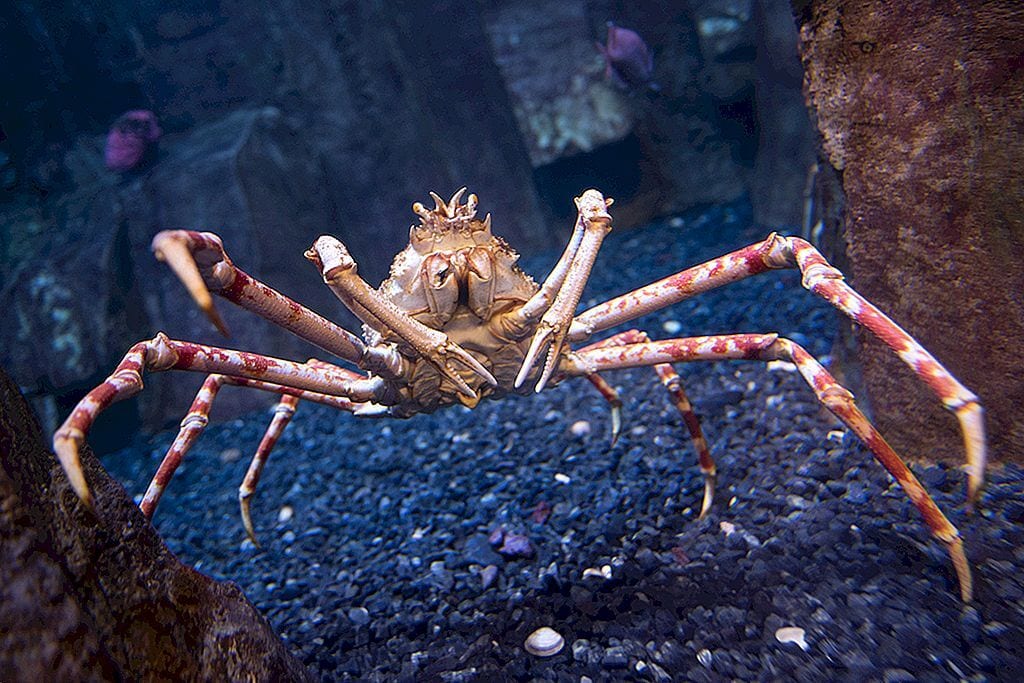 The span of one pair of legs is up to three meters. It can be found in the Pacific Ocean, near Japan, at a depth of 50 to 300 m. Its body length is up to 80 cm, and together with its legs it is up to 6 m, it weighs from 16 to 20 kg.
The span of one pair of legs is up to three meters. It can be found in the Pacific Ocean, near Japan, at a depth of 50 to 300 m. Its body length is up to 80 cm, and together with its legs it is up to 6 m, it weighs from 16 to 20 kg.
Catching him is not so easy, because. with his claws, he can seriously injure. Japanese crab – a delicacy. Once upon a time, 27-30 tons were caught per year, but now the fishery has been reduced to 10 tons, during the breeding season of crabs, i.e. spring, you can not touch them.
They themselves eat both plant and animal food, and do not refuse carrion. Their natural enemies are octopuses and squids.



